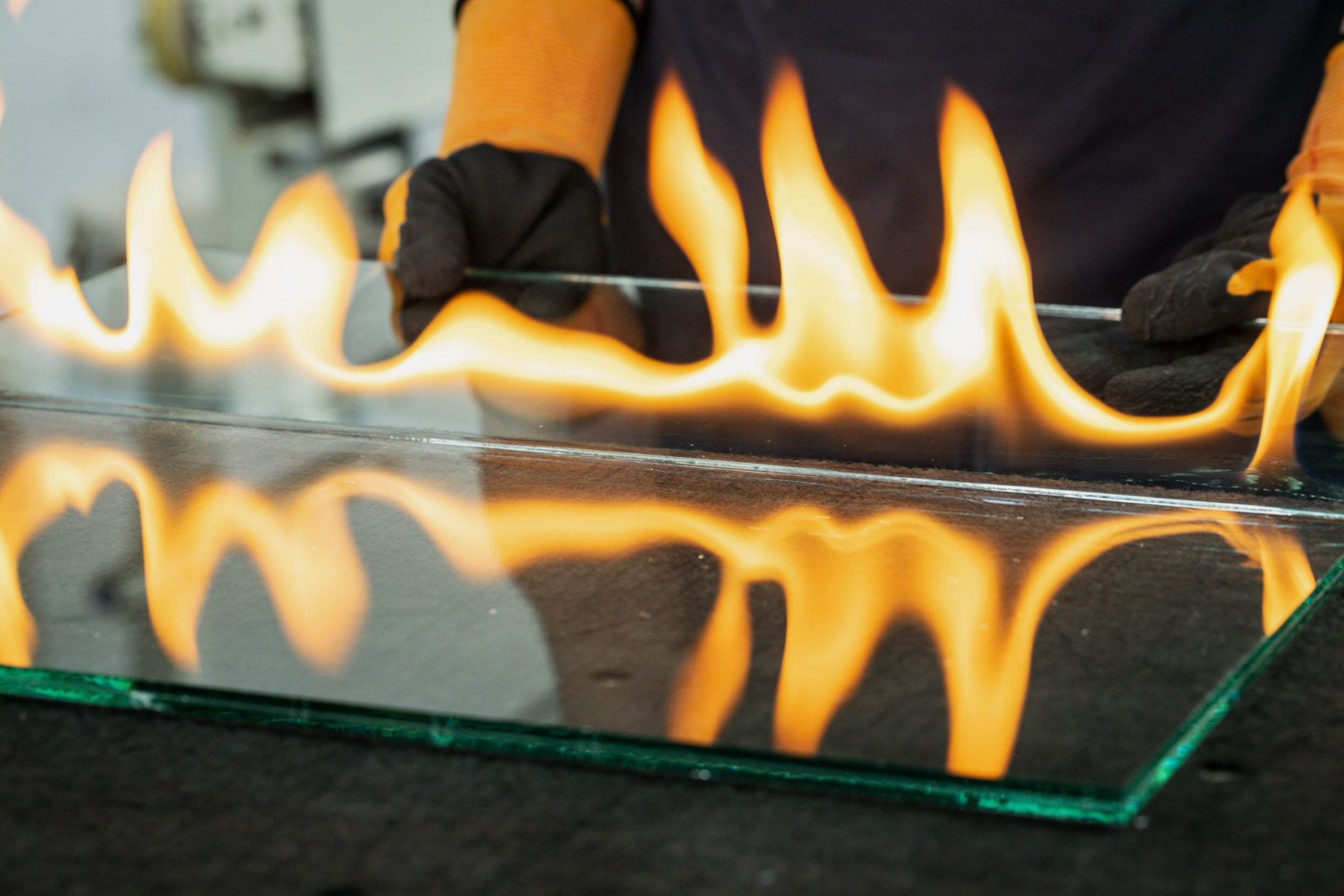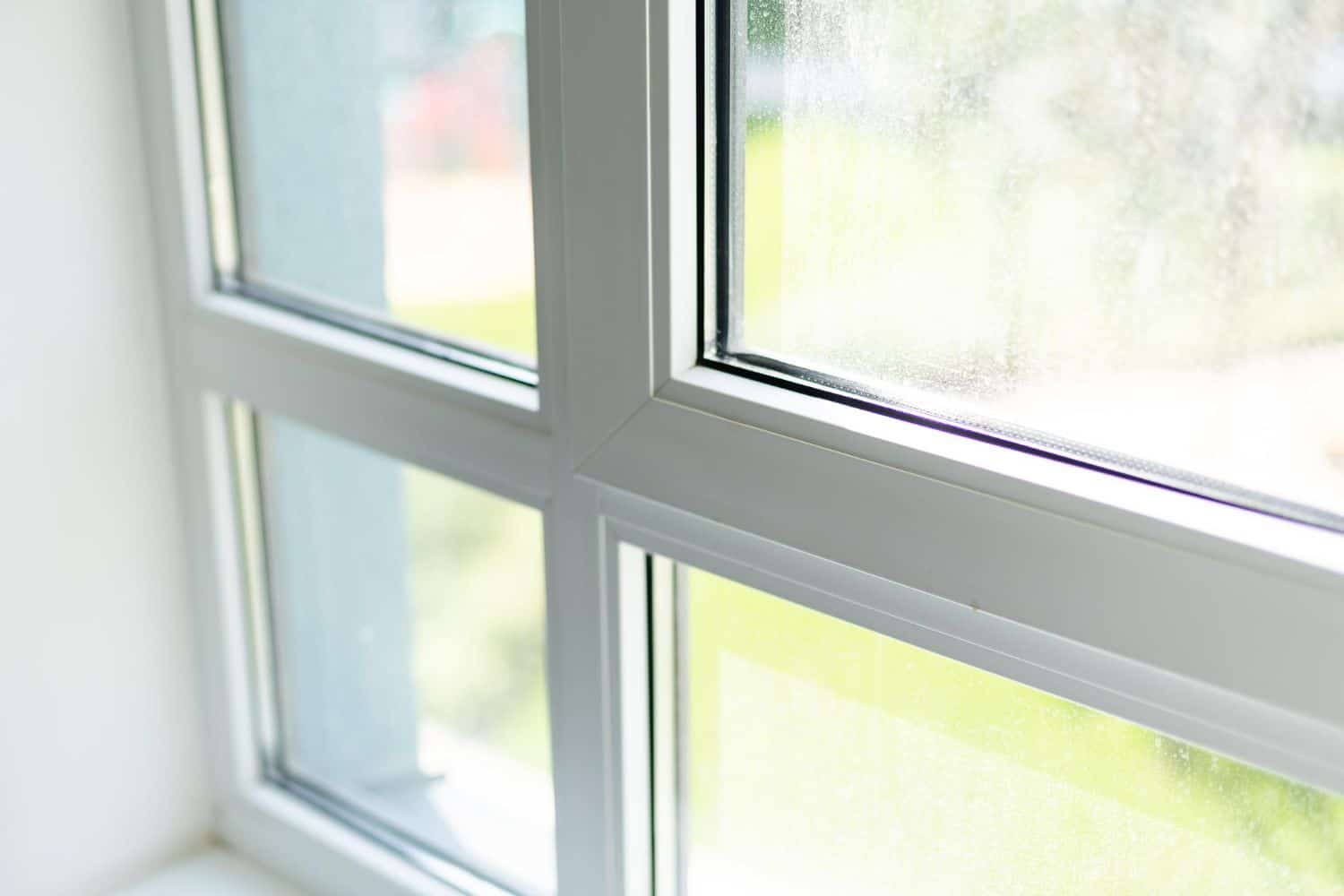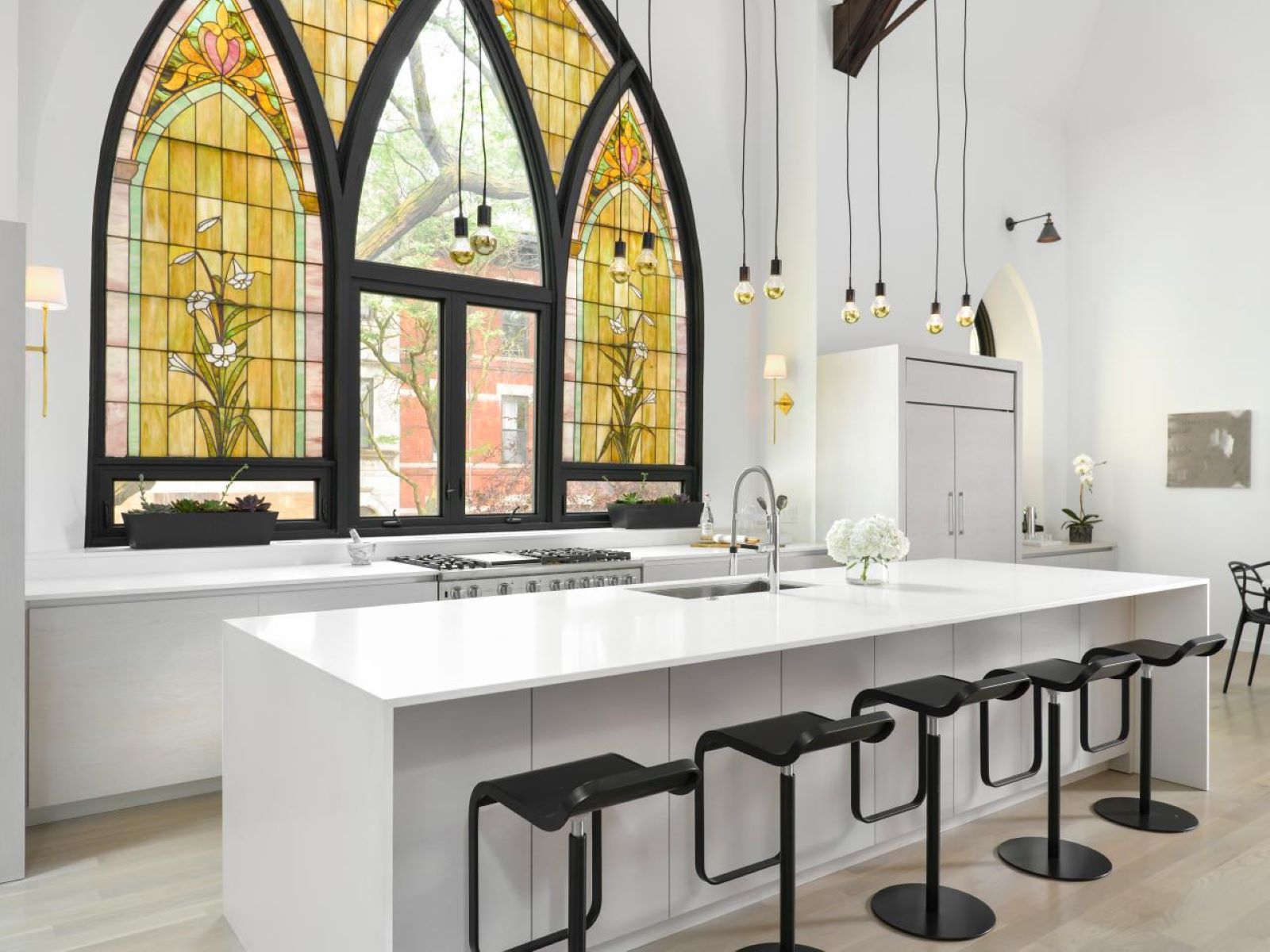Home>Furniture & Design>Interior Design Trends>How To Make Glass Windows


Interior Design Trends
How To Make Glass Windows
Modified: February 18, 2024
Learn the latest interior design trends for creating stunning glass windows. Discover expert tips and techniques to elevate your home's aesthetic.
(Many of the links in this article redirect to a specific reviewed product. Your purchase of these products through affiliate links helps to generate commission for Storables.com, at no extra cost. Learn more)
Introduction
Glass windows are an essential element of any home, providing natural light, ventilation, and a connection to the outdoors. Whether you're replacing old windows or embarking on a new construction project, knowing how to make glass windows can be a valuable skill. By understanding the process of creating and installing glass windows, you can personalize your living space and enhance its aesthetic appeal.
Creating glass windows involves a series of steps, from gathering the necessary materials to installing the finished product. This comprehensive guide will walk you through each stage, providing insights into the tools required, glass-cutting techniques, and frame assembly. By following these steps, you can achieve custom-made glass windows that complement your home's architecture and reflect your personal style.
In the following sections, we will delve into the materials and tools needed for this project, as well as the step-by-step process of making and installing glass windows. Whether you're a seasoned DIY enthusiast or a novice looking to expand your skill set, this guide will equip you with the knowledge and confidence to embark on this rewarding endeavor. Let's embark on this journey to transform your living space with beautifully crafted glass windows.
Key Takeaways:
- Crafting custom glass windows involves meticulous steps from gathering materials to installation. Attention to detail and safety are crucial for creating functional and visually appealing windows that enhance living spaces.
- The process of making glass windows requires precision in cutting, cleaning, assembling, and installing. By mastering these steps, you can transform your home with beautifully crafted, energy-efficient windows.
Read more: How To Make Leaded Glass Window
Materials and Tools Needed
When embarking on the endeavor of making glass windows, it's essential to gather the necessary materials and tools to ensure a smooth and efficient process. Here's a comprehensive list of what you'll need:
Materials:
- Glass Panes: Select high-quality glass panes that are suitable for windows. Consider factors such as thickness, transparency, and insulation properties based on your specific requirements and climate conditions.
- Window Frame Material: Depending on your design preferences and the architectural style of your home, choose the appropriate material for the window frame. Common options include wood, aluminum, vinyl, or fiberglass.
- Sealant and Caulk: To ensure proper insulation and weatherproofing, acquire a high-quality sealant and caulk suitable for glass windows. This will help prevent air and water infiltration, enhancing the energy efficiency of your home.
- Hardware: Gather the necessary hardware components, such as hinges, handles, locks, and any decorative elements that will complement the overall design of the windows.
- Safety Equipment: Working with glass requires adequate safety measures. Obtain safety goggles, gloves, and protective clothing to prevent injuries during the glass-cutting and installation processes.
Tools:
- Glass Cutter: A high-quality glass cutter is essential for precision cutting of the glass panes to fit the window frame dimensions accurately.
- Measuring Tools: Ensure you have a reliable tape measure, straight edge, and T-square to take accurate measurements and ensure the glass panes and window frames are aligned correctly.
- Glass Grinder: In some cases, a glass grinder may be necessary to smooth and shape the edges of the glass panes for a perfect fit within the frame.
- Putty Knife: This tool is essential for applying sealant and caulk to create a secure and weather-resistant seal between the glass and the frame.
- Screwdriver and Hardware Installation Tools: Depending on the type of hardware you've chosen, have the appropriate screwdrivers and installation tools on hand to securely attach the hardware to the window frame.
By ensuring you have all the required materials and tools at the outset, you can streamline the process of making glass windows and minimize interruptions. With these essentials in place, you'll be well-prepared to proceed to the next steps of cutting the glass, assembling the frame, and ultimately installing your custom-made glass windows.
Step 1: Gathering the Materials
Before diving into the process of making glass windows, it's crucial to gather all the essential materials and tools to ensure a seamless and efficient workflow. The quality and suitability of the materials will significantly impact the durability, functionality, and aesthetic appeal of the finished windows. Here's a detailed overview of the materials required for this project:
Glass Panes
The foundation of any glass window is, of course, the glass itself. When selecting glass panes, it's important to consider factors such as thickness, transparency, and insulation properties. For windows in different areas of the house, varying types of glass may be required. For instance, double-paned or insulated glass is often used for better insulation and noise reduction, especially for windows facing busy streets or noisy neighborhoods. Additionally, tempered or laminated glass is recommended for enhanced safety and security, particularly for windows in high-traffic areas or regions prone to severe weather conditions.
Window Frame Material
The choice of window frame material is pivotal in determining the overall aesthetics, energy efficiency, and maintenance requirements of the windows. Common options include wood, aluminum, vinyl, and fiberglass. Each material has its unique characteristics, such as wood's classic appeal, aluminum's durability, vinyl's low maintenance, and fiberglass's strength. Consider the architectural style of your home, the prevailing climate conditions, and your personal preferences when selecting the most suitable frame material for your glass windows.
Sealant and Caulk
To ensure the longevity and performance of the glass windows, it's essential to invest in high-quality sealant and caulk. These materials play a crucial role in weatherproofing and insulating the windows, preventing air and water infiltration. Proper application of sealant and caulk not only enhances the energy efficiency of your home but also safeguards the structural integrity of the windows, reducing the risk of moisture-related damage and heat loss.
Hardware
The hardware components, including hinges, handles, locks, and decorative elements, are integral to the functionality and visual appeal of the glass windows. Choose hardware that complements the overall design aesthetic and meets your specific functional requirements. Whether you opt for traditional, contemporary, or custom hardware, ensure that it aligns with the style and operational needs of the windows.
Read more: How To Clean Glass Windows
Safety Equipment
Working with glass demands adequate safety precautions. Prioritize the acquisition of safety goggles, gloves, and protective clothing to mitigate the risk of injuries during the glass-cutting and installation processes. Safety should always be a top priority when handling glass and related tools, and having the appropriate safety gear is non-negotiable.
By meticulously gathering these materials, you lay a solid foundation for the subsequent steps of cutting the glass, assembling the frame, and installing the custom-made glass windows. This comprehensive approach ensures that you are well-equipped to embark on this rewarding journey of creating and installing glass windows that elevate the aesthetics and functionality of your living space.
Step 2: Cutting the Glass
Precise and accurate glass cutting is a critical step in the process of making glass windows. It requires careful measurements, the right tools, and a steady hand to ensure that the glass panes fit perfectly within the window frame. Here's a detailed overview of the essential aspects involved in cutting the glass for your custom-made windows:
Measuring and Marking
Before cutting the glass, it's crucial to measure the dimensions of the window openings accurately. Use a reliable tape measure, straight edge, and T-square to ensure precise measurements. Mark the cutting lines on the glass panes using a glass cutter, making sure to account for any necessary allowances for the frame and sealing materials.
Using a Glass Cutter
A high-quality glass cutter is essential for achieving clean and accurate cuts. Hold the glass cutter firmly and score along the marked cutting lines with a steady hand and consistent pressure. It's important to score the glass in a single, fluid motion to create a smooth and uniform cut. Avoid applying excessive pressure, as this can cause the glass to crack unevenly.
Read more: How To Measure Glass For A Window
Breaking the Glass
Once the glass is scored, it's time to carefully break it along the scored line. Place the scored line along the edge of a flat surface, such as a table or workbench, with the scored side facing up. Gently apply pressure on the opposite side of the score using your hands or a specialized breaking tool designed for glass. The glass should cleanly break along the scored line, resulting in the desired shape and size for the window pane.
Smoothing the Edges
After cutting the glass, it's common for the edges to be sharp and uneven. Using a glass grinder, carefully smooth the edges to ensure a perfect fit within the window frame. This step is crucial for both safety and aesthetics, as smooth edges reduce the risk of injury and create a polished, professional finish for the glass windows.
Safety Considerations
Working with glass demands strict adherence to safety measures. Always wear safety goggles and gloves when cutting and handling glass to protect against potential injuries from sharp edges and glass shards. Additionally, ensure that the work area is clear of any obstructions and that the glass-cutting tools are used with caution and precision.
By mastering the art of cutting glass for your windows, you can ensure that the resulting panes fit seamlessly within the frames, creating a visually stunning and functional addition to your home. This meticulous attention to detail in the cutting process sets the stage for the subsequent steps of cleaning the glass, assembling the frame, and ultimately installing your custom-made glass windows.
Step 3: Cleaning the Glass
Once the glass panes have been accurately cut to fit the window frames, the next crucial step in the process of making glass windows is thorough cleaning. Proper cleaning not only enhances the visual appeal of the glass but also ensures optimal transparency and clarity, allowing natural light to permeate the living spaces unhindered. Here's a detailed guide on the essential aspects of cleaning the glass for your custom-made windows:
Read more: How To Replace Glass In A Window
Removing Residue and Debris
Before initiating the cleaning process, it's important to inspect the glass panes for any residual debris, such as glass shards, dust, or adhesive remnants from the cutting and grinding stages. Using a soft-bristled brush or a microfiber cloth, gently remove any loose particles from the glass surface. This initial step prevents the risk of scratches and ensures a clean starting point for the subsequent cleaning procedures.
Choosing the Right Cleaning Solution
Selecting an appropriate cleaning solution is pivotal in achieving streak-free and spotless glass surfaces. Opt for a high-quality glass cleaner or prepare a homemade solution using a mixture of mild dish soap and water. Avoid cleaners containing harsh chemicals or abrasive substances that may damage the glass or leave behind unsightly residues. Additionally, ensure that the cleaning solution is compatible with any coatings or treatments applied to the glass panes.
Application and Wiping Technique
Spray the chosen cleaning solution onto the glass surface or onto a clean, lint-free cloth. Using overlapping vertical or horizontal strokes, wipe the glass thoroughly to distribute the cleaning solution evenly. This technique helps to ensure comprehensive coverage and effective removal of dirt, grease, and other impurities from the glass. Pay particular attention to any stubborn spots or smudges, applying gentle pressure as needed to lift and eliminate them.
Drying and Polishing
After cleaning the glass, it's essential to dry and polish the surfaces to achieve a pristine, streak-free finish. Utilize a dry, lint-free cloth or a squeegee to remove excess moisture and prevent water spots or streaks from forming. For an added touch of brilliance, consider using a microfiber cloth to polish the glass, imparting a crystal-clear luster to the panes.
Read more: How Window Glass Is Made
Inspecting for Imperfections
Upon completing the cleaning process, carefully inspect the glass panes for any remaining streaks, smudges, or imperfections. Address any lingering blemishes with a targeted spot-cleaning approach, using a clean cloth and a minimal amount of the chosen cleaning solution. This meticulous inspection and touch-up ensure that the glass surfaces are impeccably clean and ready for installation.
By meticulously cleaning the glass panes, you can elevate the visual appeal and functionality of your custom-made windows, allowing them to serve as transparent portals that invite natural light and scenic views into your living spaces. This attention to detail in the cleaning process sets the stage for the subsequent steps of assembling the frame and installing your meticulously crafted glass windows.
Step 4: Assembling the Frame
Assembling the frame is a pivotal stage in the process of making glass windows, as it involves integrating the glass panes with the chosen window frame material to create a unified and functional unit. This step requires precision, attention to detail, and a methodical approach to ensure that the glass windows are structurally sound, aesthetically pleasing, and capable of withstanding the rigors of everyday use and environmental factors.
Fitting the Glass Panes
Carefully position the cleaned and polished glass panes within the designated openings of the window frame. Ensure that the dimensions of the glass panes align perfectly with the frame, allowing for a snug and secure fit. Depending on the frame material, you may need to apply a thin, uniform layer of sealant or caulk along the edges of the frame to create a weatherproof seal and secure the glass panes in place.
Securing the Hardware
If your window design incorporates hardware components such as hinges, handles, or locks, this is the stage at which they are securely attached to the frame. Follow the manufacturer's guidelines and recommended installation procedures to ensure that the hardware is affixed correctly and functions smoothly. Properly installed hardware not only enhances the operational functionality of the windows but also contributes to the overall visual appeal and security of the finished product.
Read more: How To Fix Window Glass
Applying Sealant and Caulk
To fortify the weather resistance and insulation properties of the glass windows, carefully apply sealant and caulk along the seams where the glass meets the frame. This meticulous application of sealant serves as a protective barrier against air infiltration, moisture, and temperature fluctuations, contributing to the energy efficiency and longevity of the windows. Pay close attention to achieving a uniform and watertight seal to safeguard the interior spaces from external elements.
Quality Assurance Check
Upon completing the assembly of the frame and glass panes, conduct a thorough quality assurance check to ensure that all components are securely in place, the sealant and caulk are applied correctly, and the overall appearance meets your expectations. This step involves scrutinizing the windows from both the interior and exterior perspectives, verifying that they align with the intended design, functionality, and aesthetic standards.
By meticulously assembling the frame and integrating the glass panes with precision and care, you can bring your custom-made glass windows to fruition, ready to enhance the ambiance and functionality of your living spaces. This meticulous attention to detail in the assembly process sets the stage for the final step of installing your meticulously crafted glass windows, marking the culmination of your dedicated efforts and craftsmanship.
Step 5: Installing the Glass
The installation of the glass marks the culmination of the meticulous process of creating custom-made windows. This pivotal step involves integrating the assembled window units into the designated openings, ensuring a secure and weatherproof fit that enhances the structural integrity and visual appeal of the living spaces.
Preparing the Window Openings
Before installing the glass windows, it's essential to prepare the window openings to accommodate the frames. This may involve removing any existing windows, cleaning the surrounding surfaces, and inspecting the structural integrity of the window openings. Any necessary adjustments or repairs should be addressed at this stage to ensure a seamless installation process.
Read more: How Thick Is Window Glass
Positioning and Alignment
Carefully position the assembled window units within the prepared openings, ensuring that they align squarely and plumb within the surrounding walls. This step demands precision and attention to detail to guarantee that the windows fit snugly and harmoniously with the architectural elements of the building. Utilize shims and levelers as needed to achieve precise alignment and ensure that the windows operate smoothly.
Securing the Windows
Once the windows are positioned correctly, secure them in place using appropriate fastening methods. Depending on the window frame material and the surrounding structure, this may involve screwing the frames into place, anchoring them with fasteners, or employing other secure attachment techniques. The goal is to create a stable and durable connection between the windows and the building, capable of withstanding environmental forces and everyday use.
Insulating and Sealing
To fortify the weather resistance and energy efficiency of the installed windows, apply insulation materials and sealants around the perimeter of the frames. This crucial step helps prevent air infiltration, moisture penetration, and heat loss, contributing to a comfortable and well-insulated interior environment. Proper insulation and sealing also play a role in reducing external noise and enhancing the overall performance of the windows.
Quality Assurance and Finishing Touches
Conduct a comprehensive quality assurance check to verify that the installed windows meet the desired standards of functionality, aesthetics, and structural integrity. Ensure that the operation of the windows is smooth, the seals are watertight, and the overall appearance aligns with the intended design. Address any final adjustments or touch-ups to perfect the installation and ensure that the windows are ready to serve as transparent portals that connect the interior spaces with the outside world.
By meticulously executing the installation of the glass windows, you bring to fruition the vision of creating custom-made windows that elevate the ambiance, functionality, and visual appeal of your living spaces. This final step represents the culmination of your dedicated efforts and craftsmanship, resulting in a transformative enhancement of your home's architectural character and livability.
Read more: How To Make Window Valances
Conclusion
Embarking on the journey of making glass windows is a rewarding endeavor that allows you to personalize your living space and elevate its aesthetic and functional appeal. Throughout the process, from gathering the materials and cutting the glass to assembling the frame and installing the windows, meticulous attention to detail and craftsmanship are essential. By mastering the art of creating custom-made glass windows, you can transform your home into a sanctuary of natural light, scenic views, and architectural elegance.
The journey begins with the careful selection of high-quality materials, including glass panes, window frame materials, sealants, hardware, and safety equipment. Each component plays a crucial role in shaping the durability, energy efficiency, and visual allure of the finished windows. With the essential materials and tools in hand, you lay the groundwork for the subsequent stages of crafting and installing the glass windows.
The process of cutting the glass demands precision, patience, and adherence to safety measures. By meticulously measuring, scoring, breaking, and smoothing the glass panes, you ensure that they fit seamlessly within the window frames, creating transparent portals that invite natural light and scenic views into your living spaces.
Thoroughly cleaning the glass panes is a transformative step that enhances their transparency, clarity, and visual allure. By removing residue, choosing the right cleaning solution, and applying meticulous wiping and drying techniques, you elevate the glass surfaces to a pristine, streak-free state, ready to adorn your home with their radiant presence.
Assembling the frame and integrating the glass panes with precision and care is a pivotal stage that brings your custom-made windows to fruition. By fitting the glass panes, securing the hardware, and applying sealant and caulk, you create a unified and weatherproof unit that harmonizes with the architectural elements of your home.
The culmination of this meticulous process is the installation of the glass windows, marking the transformation of your living spaces into havens of natural light, scenic beauty, and architectural elegance. By positioning, aligning, securing, insulating, and sealing the windows, you ensure that they stand as resilient and captivating features that enrich the ambiance and functionality of your home.
In conclusion, the journey of making glass windows is a testament to your dedication to craftsmanship and your commitment to shaping living spaces that reflect your unique style and preferences. By mastering the art of creating custom-made glass windows, you infuse your home with timeless elegance, inviting warmth, and a seamless connection to the outdoors. This transformative endeavor not only enhances the visual allure of your living spaces but also elevates their functionality, energy efficiency, and overall livability.
Frequently Asked Questions about How To Make Glass Windows
Was this page helpful?
At Storables.com, we guarantee accurate and reliable information. Our content, validated by Expert Board Contributors, is crafted following stringent Editorial Policies. We're committed to providing you with well-researched, expert-backed insights for all your informational needs.








0 thoughts on “How To Make Glass Windows”